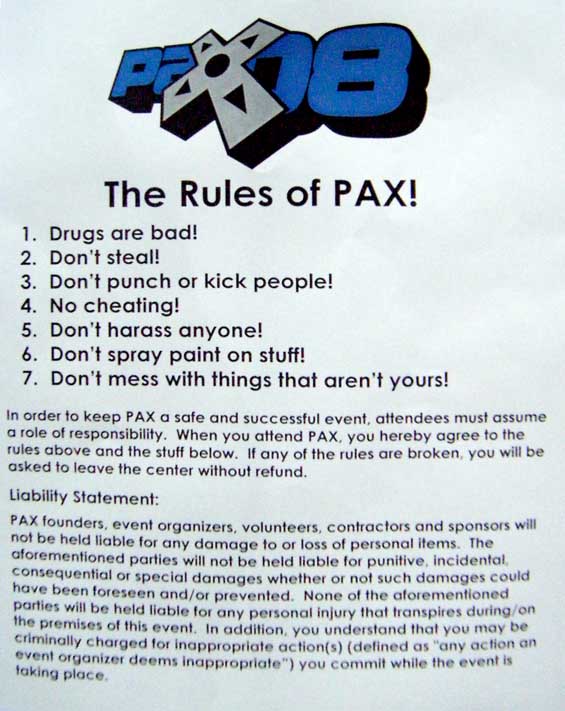Welcome to the inaugural installment of the Tuesday Review. My new review column will feature a work that will be in stores the next day (Wednesday, new comics day) or a work that has been out for a few weeks and should already be in stores everywhere. Of course, owing to my somewhat esoteric tastes not every store is going to have every book I recommend, but maybe that’ll convince you, my readers, to badger your store into carrying good, challenging, and interesting material that’s just a bit off of the beaten path? It’s worth a shot anyway… With that, here’s a book that arrived in comic book stores everywhere about a month back. Enjoy!
Disappearance Diary
By Hideo Azuma
$22.99, 200 pages, Paperback
ISBN: 978-84-96427-42-6
Diamond: JUN083951H
Published by Fanfare/Ponent-Mon
I think it’s worth noting, first off, that this is a comedy about a man who chooses to be homeless, suffers numerous breakdowns, and then spirals into alcoholism. A comedy. I think it’s important to take all of that into consideration when deciding whether or not this is the book for you.
Me, as soon as I heard about it I couldn’t wait to pick it up!
Disappearance Diary is a rare thing in English language manga–direct insight into the collective mind of the Japanese Manga Industry by an accomplished creator who worked within it for decades. Author Hideo Azuma created numerous manga serials for various magazines over the course of his career, more than a dozen are named in the book itself, and is credited with the creation of the “Lolicon” genre of manga (cute, sexy young girls in sexual situations) that would later give way to the concept of “moe” (moh-ay) or superlative cuteness. Basically, this guy has serious manga chops. The thing is, it nearly killed him to acquire them.
The table of contents for Disappearance Diary breaks the graphic novel down into four components: “Walking At Night,” covering Azuma’s first escape into homelessness, “Walking Around Town,” in which Azuma again escapes the glamourous world of manga creation to work anonymously for the gas company, “Alcoholic Ward,” which details Azuma’s battle with alcoholism, and “End of Book Discussion Hideo Azuma & Tori Miki,” which is an interview between Azuma and manga-ka Tori Miki, a contemporary of Azuma’s who has had one great book published in English by Fantagraphics: “Anywhere But Here.” But to my mind the two most important sections of the book aren’t listed on that table of contents: one is tacked onto the end of the second section, and the other is literally hidden from sight–and they are quite simply the strongest sections of the manga.
But lets back up a little bit. The quote on the back cover of Disappearance Diary is pulled from the second panel of the book, and it reads “This manga has a positive outlook on life, and so it has been made with as much realism removed as possible.” It’s a little unsettling to pick up an ostensibly non-fiction, autobiographical book and see that on the back cover, and as the first sentence. I was a little surprised myself, and I imagine that it might put off those without a sense of humour about this sort of thing (anyone who tried to return a copy of James Frey’s Million Little Pieces, for example). But when the author’s first suicide attempt arrives 2 pages later and it’s hilarious rather than tragic, you begin to understand–and be grateful for–his light-hearted approach to personal tragedy. It’s impossible to tell how much of the thought and action attributed by Azuma to his adorable cartoon stand-in is strictly true, strictly accurate, but almost regardless it’s certainly convincing. By the second or third short story I was rooting for Azuma–to find some food in the wilderness, to figure out how to keep the rain off of him, and avoid being discovered by the authorities. It’s a hell of a thing to root for a guy that has abandoned his life, his wife, and his infant son, but such trivial and earthly concerns nearly-evaporate when Azuma figures out how to build a fire… It’s all a bit like if Tom Hanks’ character crashed the plane himself in ‘Castaway,’ but you’re still excited when he cooks the crab! The Azuma stand-in is incredibly self-effacing, humble, and especially adorable. He is designed to be loved, a personification of the lolicon/moe/kawaii ethos that Azuma the author contributed to developing within the manga industry. Azuma needs your good will and your empathy though, because that’s what makes his spiral into truly self-destructive behaviour so affecting, and enraging. By the time he gets around to explaining just why exactly his life was so tough, you can’t help but feel for the poor cartoon guy, and that wouldn’t have happened (I feel) with a more realistic depiction of Azuma, or his actions.
So at the end of the second section, “Walking Around Town,” it looks like Azuma simply ran out of stories to tell about his second foray into homelessness and obscurity, and so to fill out his serialization he decides to tack on three short pieces that chronicle his entire career in manga up until he checks into rehab, the last major event in his life before he begins creating this book. This might be the most important, and difficult to read, section in the manga, as it describes in painful (though surprisingly light-hearted) detail just how intense the creation of our favourite manga can be. It’s one thing to be told “Working in the manga industry is tough!” It’s another altogether to work alongside our beloved and cherubic narrator and see him slide cheerfully into oblivion. Rereading Disappearance Diary for this review, I couldn’t help but compare Azuma’s horror stories of working in the manga industry to the recently unearthed documents surrounding Siegel & Shuster’s dealings with National Periodicals during the early days of Superman. Is there something endemic of comics that creates creators that drive themselves to ruin and editors there to backseat drive the whole way? Azuma puts forward a solid argument for.
Another key piece of these stories, presented as almost an afterthought in the book, is that we’re introduced to them via a conversation between Azuma and the editor of the book we’re reading, probably in serialization. Azuma never lets you forget that you’re reading a manga about his problems with manga, making you complicit in the acts that cause his downward spiral. Of course he never accuses the reader directly, and takes great pains to filter these experiences through a very deliberate prism separating the heartbreak out and leaving only sunshine and humour behind. He lays out all of the clues for you and lets you make your own mind. Actually, he does that in his portreyal of his editors at the time as well. By all accounts, these men drove him not only to drink but to the drink of death, but he treats all of them with the lightest possible touch. They come off as heartless, uncaring, maybe even a little evil at points, but Azuma simply presents things as they were (to his recollection) and again, lets the readers fill in the gaps. Why? Well, I think it’s telling that his harshest criticisms of his editors are, effectively, “They stopped giving me work!” Despite all of the hardships and heartache, you get the feeling that he wasn’t entirely ready to burn his bridges with these folks, just in case he might get an assignment or two out of them again…!
The third section of the book chronicles Azuma’s fall into alcoholism, and his slow recovery in a rehab clinic, and that’s by turns funny and horrifying and as enjoyable as the rest of the book. Seriously, by this point in the book I was completely in love with it, all of its promises fulfilled. Well… almost all of them. The book ends with Azuma clearly on the road to recovery, managing his alcoholism but… still clearly in rehab. I mean, we’ve already seen him post rehab at the end of the second section of the book, we see that he comes out of it, but the book is left on a cliffhanger, with Azuma promising to tell the rest of his story “next time…”. That leaves us with the end-of-book interview to fill in the gap, to offer clarity and context to the graphic novel. But of course, that wouldn’t be in keeping with a positive outlook on life, with as much realism removed as possible, now would it? Which isn’t to say that the interview with Tori Miki is devoid of content or closure… It’s just not what we want after spending many years and 200 pages with Azuma. We want the last word on him, or a breathrough, or something, and in the end what we get is his life, as honestly as he could bare to tell it (and full of as many jokes as he could cram in). And he answers one of my early questions too–Azuma says that not everything that happened made it into the book, but everything that’s in the book actually happened.
The real clarity comes in an interview that is hidden from the reader… I’ll let you discover it for yourself but I will reveal that this hidden interview is where Azuma offers the first real bit of insight into his actions, what it means to leave your life behind. It isn’t pretty, but it lasts for only a moment or two before disolving into a conversation about which popular Japanese idols are prettiest. Azuma is certainly committed to his manga ideology, I’ll give him that.
I guess I’ll finish off by saying that, in today’s graphic novel market memoir and autobiography are the genres that have found the most traction amongst real mainstream readers… at least the ones not buying movie tie-ins. In a just world, this one would find a great deal of success… But I have a feeling that Disappearance Diary has traded in too much of what mainstream audiences want from their memoir for a gentle, knowing humour and a refusal to find a conclusion in an ongoing life. Disappearance Diary is a book that can find the comedy in tradgedy, and as we’ve already established that’s the book for me!
A copy of this book was provided for review by the publisher. But let’s be honest, I woulda bought in anyway…!
– Christopher



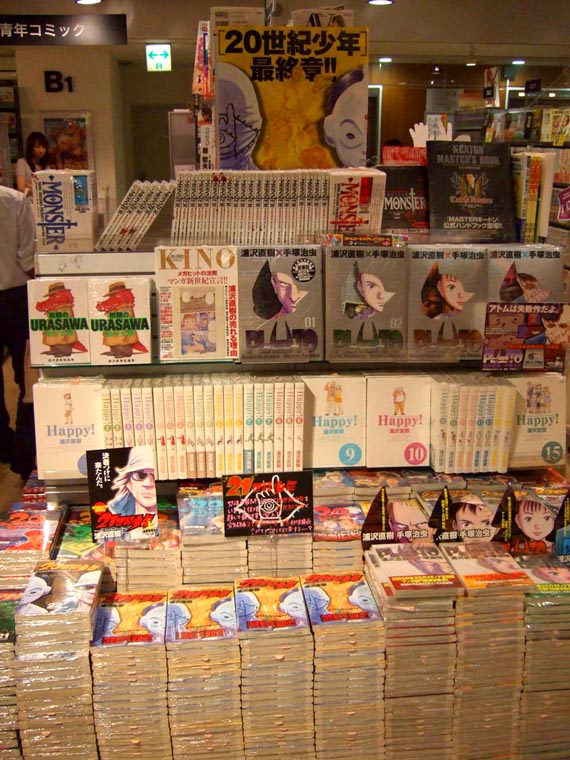
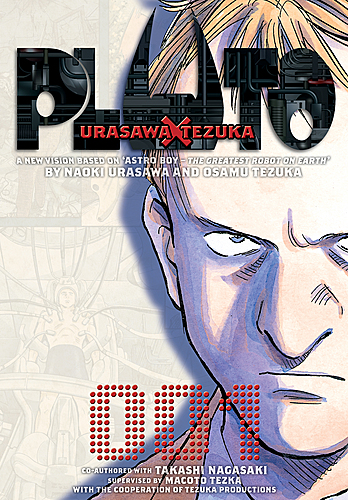
 Black Jack Volume 1
Black Jack Volume 1
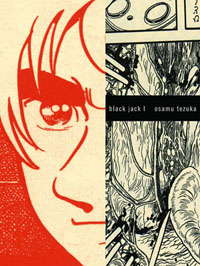 Black Jack doesn’t really work as a historical record, or a reflection of the time in which it was created because of the re-drawing and re-sequencing, and I think that the earlier Vertical Tezuka releases are where you would want to go for that… But considering Vertical’s ultra-contemporary book design choices and packaging, it seems that they aren’t interested in presenting Black Jack as a historical document anyway. The bold graphic design on this book is almost non-representational, a small piece of Tezuka’s art depicting the inside of a body is obscured and cropped so as to appear nearly abstract; the back cover features a sprawling futuristic industrial complex built from Lego. This is not being presented as a record of manga’s glorious past, but as a vital and engaging contemporary work. It reminds me of Viz’s handling of their recent release Cat-Eyed Boy, actually, in eschewing a historical connection almost entirely. To that end, volume one of Black Jack is entirely devoid of any sort of historical or academic context… the stories run right to the very last page of the book, endpapers be damned. I understand this decision of course, but I ultimately disagree with it: the stories don’t work presented as contemporary entertainment. They’re simply a little too unsophisticated for a generation of readers who are familiar with shows like ‘House.’ The formula is exactly, exactly the same of course, with the mysterious taciturn brusque brilliant surgeon solving the rare medical condition of the week, but the lengths to which Black Jack’s surgical prowess are stretched could snap a suspension-bridge of disbelief… But they’re totally fun, totally engrossing. Black Jack is a page-turner of the highest order, and I blew through 280+ pages and I’m hungry for more. I just feel that, seeing as this is the 20th-or-so Tezuka graphic novel I’ve read, I’m one of the initiated, I’m on board. As such, I’m the kind of reader that wants to know as much about this character and this world as possible, and I want a killer piece of Tezuka art on the cover too!
Black Jack doesn’t really work as a historical record, or a reflection of the time in which it was created because of the re-drawing and re-sequencing, and I think that the earlier Vertical Tezuka releases are where you would want to go for that… But considering Vertical’s ultra-contemporary book design choices and packaging, it seems that they aren’t interested in presenting Black Jack as a historical document anyway. The bold graphic design on this book is almost non-representational, a small piece of Tezuka’s art depicting the inside of a body is obscured and cropped so as to appear nearly abstract; the back cover features a sprawling futuristic industrial complex built from Lego. This is not being presented as a record of manga’s glorious past, but as a vital and engaging contemporary work. It reminds me of Viz’s handling of their recent release Cat-Eyed Boy, actually, in eschewing a historical connection almost entirely. To that end, volume one of Black Jack is entirely devoid of any sort of historical or academic context… the stories run right to the very last page of the book, endpapers be damned. I understand this decision of course, but I ultimately disagree with it: the stories don’t work presented as contemporary entertainment. They’re simply a little too unsophisticated for a generation of readers who are familiar with shows like ‘House.’ The formula is exactly, exactly the same of course, with the mysterious taciturn brusque brilliant surgeon solving the rare medical condition of the week, but the lengths to which Black Jack’s surgical prowess are stretched could snap a suspension-bridge of disbelief… But they’re totally fun, totally engrossing. Black Jack is a page-turner of the highest order, and I blew through 280+ pages and I’m hungry for more. I just feel that, seeing as this is the 20th-or-so Tezuka graphic novel I’ve read, I’m one of the initiated, I’m on board. As such, I’m the kind of reader that wants to know as much about this character and this world as possible, and I want a killer piece of Tezuka art on the cover too!
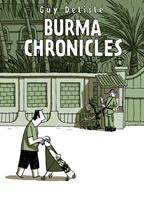 Is anyone else worried about the number of books that are coming out right now?
Is anyone else worried about the number of books that are coming out right now?